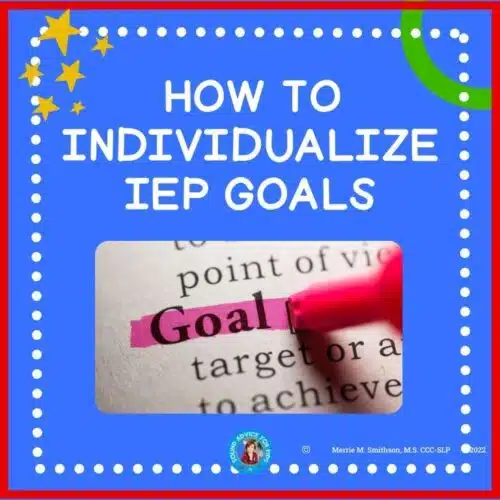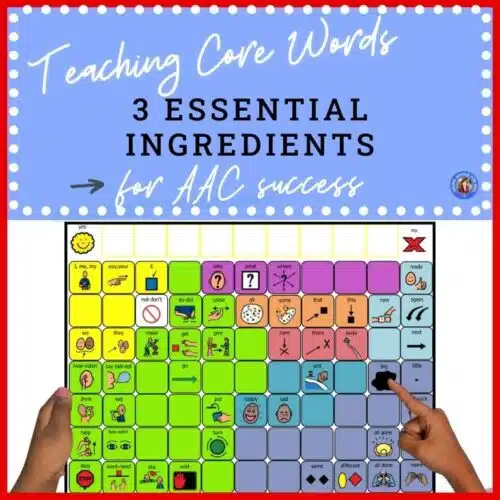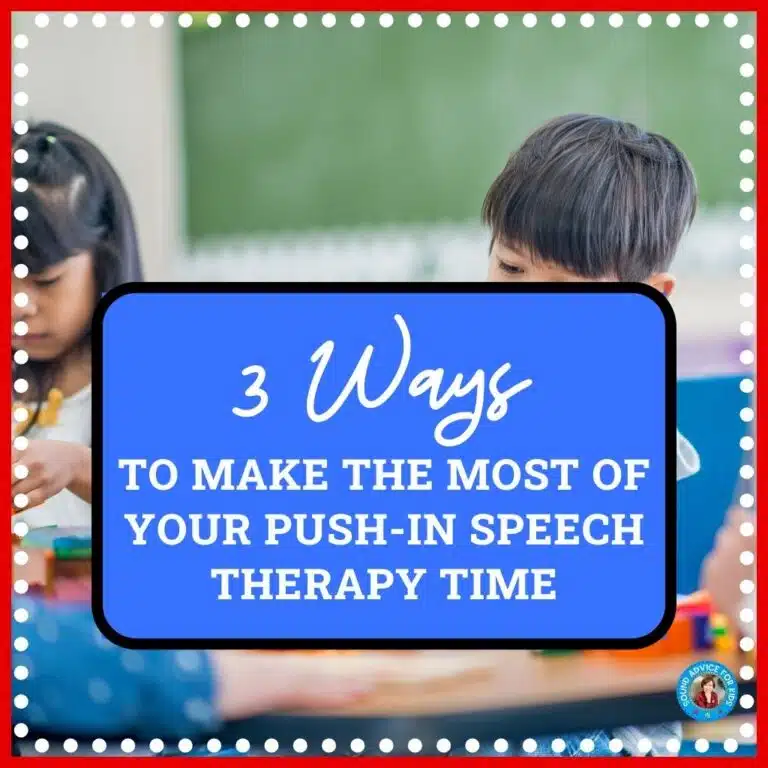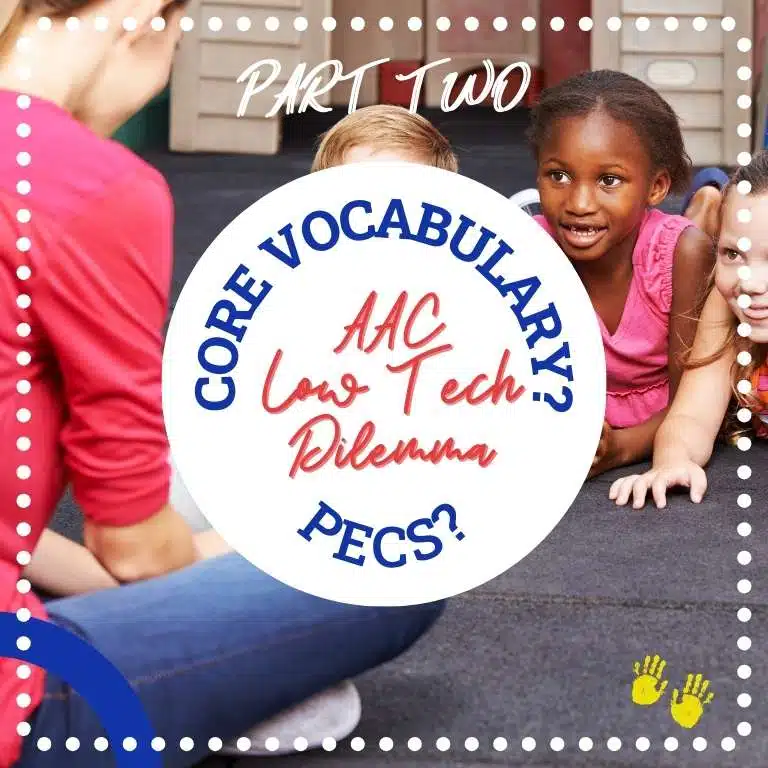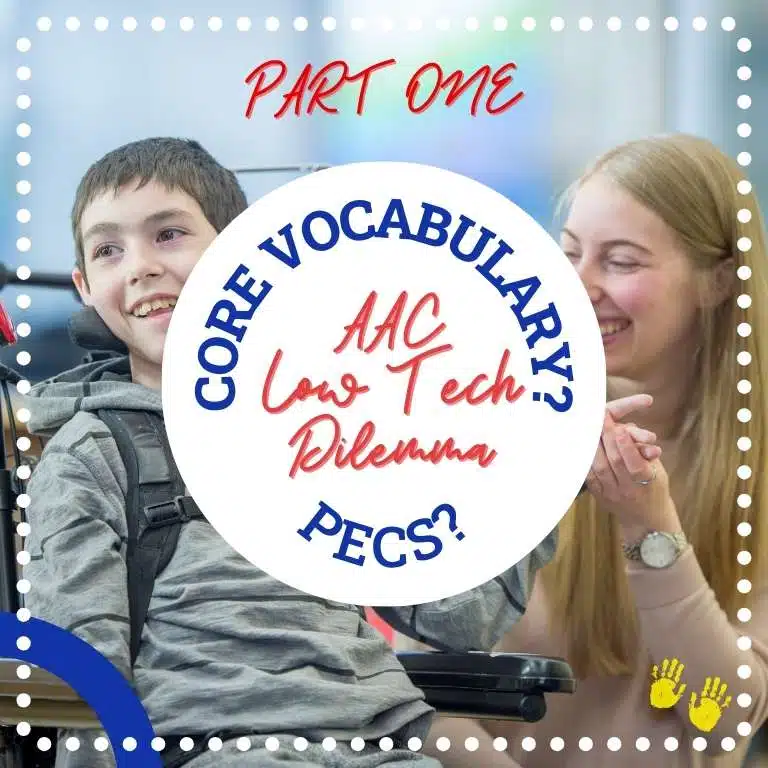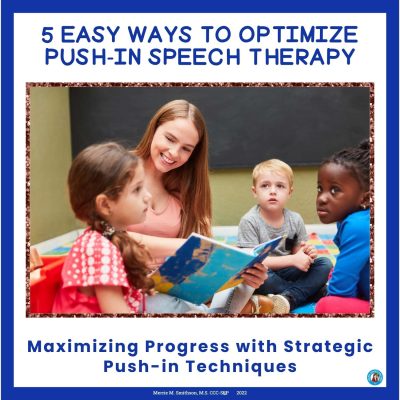
Every school SLP knows speech therapy goals need to be individualized. But does that mean every student needs their own unique IEP goal? In other words, can IEP goals for speech therapy be used for more than one student?
I completely understand where this idea comes from. After all, individualized IEPs are a hallmark of an Individual Education Program. Individual needs determine student goals. However, speech therapy goals can be used for more than one student. What I’m saying is that students’ needs drive IEP goals. So, if more than one student needs the same goal, go ahead and put it in the IEP.
However, goals still need to be individualized, right? As a preschool Push-in Speech Therapist for 30 years, most of my 3 and 4-year-olds had similar delays: decreased MLU for their chronological age (mean length of utterance) as well as limited vocabulary skills. As a result, these students all had goals to increase utterance length and vocabulary on their IEPs.
So, what did I do to make sure the speech therapy goals were individualized? Let’s take a look at a speech therapy goal for expressive language: increasing utterance length.
PERSONALIZE SPEECH THERAPY GOALS
The same speech therapy goal can be individualized by tailoring the specifics of the goal to the student’s needs. What I’m saying is to go ahead and work on the same long-term goal with your all students if they need it. However, change it up by
- individualizing the utterance length.
- determining how the student will demonstrate mastery.
- specifying the supports needed for success.
- deciding where it will occur.
- choosing how long the child needs to demonstrate mastery.
Below are two students working on utterance length. Can you tell how the goals are individualized?

Example 1: Molly will produce 1-word utterances spontaneously during class activities, in 80% of opportunities for 3 out of 4 data sessions.

Example 2: Tom will produce 2-word utterances after an adult model with the speech therapist, 50% of opportunities for four consecutive data sessions.
As you can see, there are plenty of ways to individualize goals. Simply tailor the specifics of a goal to fit the needs of each student.
USE SHORT-TERM OBJECTIVES TO INDIVIDUALIZE GOALS
Another way to individualize speech therapy goals is to use short-term objectives. This way, everyone on the IEP team will understand the steps needed to reach the long-term goal. And these steps should be tailored specifically for each student. After all, when writing short-term objectives, it’s important to understand how to get from baseline to mastery. In other words, think about the steps needed to go from point A to point B?
Let’s say the long-term goal is:
Lance will increase utterance length by using spontaneous one-word utterances with peers, during classroom activities, in 80% of opportunities for 3 consecutive data sessions.
Here are some possible short-term objectives:
- Lance will use one-word approximations with gestures when provided with an adult model… 50% of opportunities for 3 consecutive data sessions.
- Lance will use one-word approximations without gestures when provided prompts and cues…
- Lance will use one-word utterances when provided an adult model during classroom activities...
- Lance will use one-word utterances when provided an adult model when playing with peers….
In this example, short-term objectives provide more individualization for the general goal to “increase utterance length.”
I hope now you have several ideas on how to individualize long-term speech therapy goals. Since 90% of my students enter preschool needing to increase utterance length, I work on this goal all the time. As a result, these ideas help me a ton. In the final analysis, individualized speech therapy goals are possible by tailoring the specifics of a goal to the particular needs of a student and/or by using short-term objectives.

